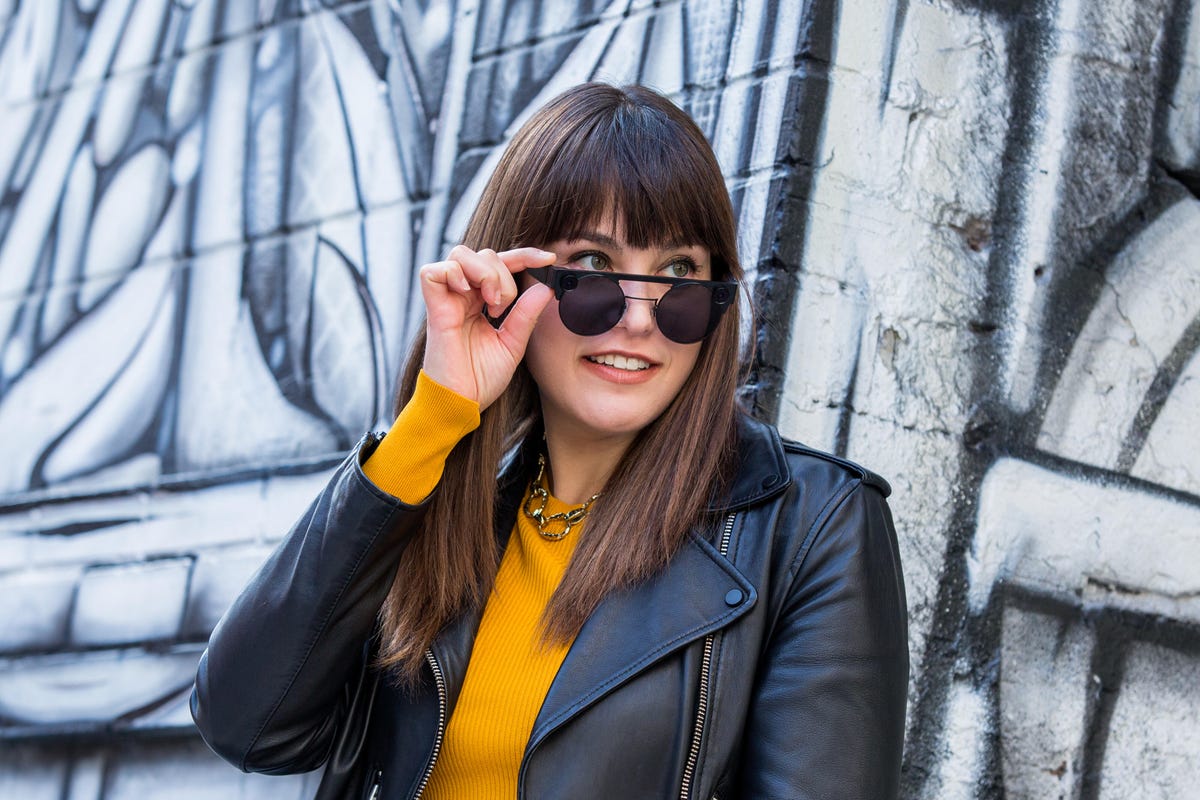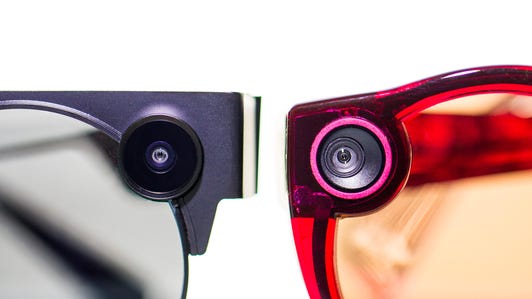For years, Snapchat’s been an app interested in pushing the boundaries of augmented reality through its camera lenses. As more AR-powered apps and headsets push into the competition, Snapchat’s parent company, Snap, has been continuing to develop its AR through artists, brands, developers and influencers who have making even more evolved AR creations, games and possibly collaborative art, too.
The company’s PC and Mac-based Lens Studio AR creation software, now two years old, has become a major conduit to new AR content. Eitan Pilipski, senior vice president of Snap’s Camera platform, says that 600,000 Lenses have been created by Snap’s developer community and used a collective 15 billion times.
New creative tools on Snap’s Lens Studio, launching Thursday, are looking to continue to attract artists who want to dabble in new ideas, adding more advanced 3D face mask textures and materials. But the competition from other AR creation toolkits, from Instagram’s Spark AR to Adobe’s Aero and Apple’s Reality Composer app, is growing.
CNET talked with Pilipski about what’s on the horizon for Snapchat and for Snap’s glasses, Spectacles, which are already in their third generation.
Crazy ideas from emerging artists are powering Snapchat’s AR.
Snapchat
Snap’s focusing on new emerging artists in AR
“We’ve seen how early professionals really find the tool and the platform a vehicle to promote their work,” Pilipski said. “Folks that are really creative that maybe don’t have the technical chops … it’s really a vehicle for them to show their portfolio of creativity, with a completely new type of partnership.” He points to Snap’s existing Creator Profile, with which Lens makers can have their own hub, and how artists have been asking for “more immersive, realistic, complex-in-nature experiences,” and he suggests that connecting creators to opportunities and brand partnerships is a future path for creators to make money.
Snap’s AR worlds will get bigger in scale
Snap already has tools that recognize real-world landmarks and transform them, or add location-specific environmental AR effects. More scanning of environments in the real world could happen, but there are “still challenges in terms of some of the fragmentation that you see on mobile devices in terms of camera sensors, some of the compute … but definitely, everything is going in the right direction.” Pilipski sees the latest version of Snap’s Spectacles glasses, which have 3D depth-sensing cameras, as another step in that path, building “a full 3D depth perception of what we are recording,” and then allowing the creators to build deeper real world-to-AR interaction. “Experiences are actually registered and interacting with the physical world.”
Collaborative AR could come next
Augmented reality has mostly been a solitary experience on headsets and phones, but new multiplayer tools and cloud-shared information could allow AR to start evolving into a team effort. “We absolutely see a future down the road, where AR and Lenses will transition from experiences to another way to communicate with our audience. For Snapchat it’s all about communication, self-expression. Doing something with your friends, but there’s something really interesting along the lines of … not shared AR, but more collaborative, as a roadmap in the future.”


Snap Spectacles 3, which launched this fall, have 3D cameras but no onboard display.
Angela Lang/CNET
Snap’s Spectacles will keep evolving into smarter glasses
The third-generation Spectacles that launched this fall don’t have a built-in display, and are really more like stereoscopic camera glasses. “We made a very deliberate decision to approach the hardware program, Spectacles, as a long-term journey where we are going to take an iterative, step-by-step approach, and with every product release, our goal is to learn,” said Pilipski. “In this third generation, what we are focused on is combining fashion with new functionality, and bringing this depth 3D ability to empower our community to create new experiences.” Snap intends to keep getting feedback and fine-tuning future Spectacles glasses and software for new experiences.
Eventually, could that mean a full-fledged AR pair of glasses? “We think that overall in terms of what you see in the landscape, the optics, compute sensors, hardware, all of them have to continue to mature and develop to provide a consumer always-on, everywhere anytime experience, and we think there’s a long, long journey to get there. What we’ve seen today is that users are not using it all the time in other products that you’ve seen out there, including Spectacles,” Pilipski said. “But we think that the long-term opportunity with Spectacles and glasses is the transition to this computer overlay in the world.”
Pilipski sees 5G as an opportunity, too. (Snap has a new partnership with Verizon to explore 5G capabilities.) “We’re talking about more polygons, more immersive experiences … are going to require more compute, and also more bandwidth.”
Snap Spectacles 3 in action









